How To Get Better At Drawing Backgrounds
Pencil drawing techniques: Pro tips to acuminate your skills

These pencil drawing techniques from top artists will help you accept your drawing skills to the next level, whether you're using graphite pencil or coloured pencils.
For many artists, pencil drawing is the skill that introduced them to the art world, and fifty-fifty if you've moved on to a dissimilar medium, understanding how to draw with a pencil tin help you lot ameliorate your skills elsewhere. These pencil cartoon techniques cover everything from the nuts of mark-making to advanced processes to push you out of your comfort zone.
We'll also offering communication on the tools and materials you lot demand to know, such as blending stumps, paper options, and dissimilar erasers. For some extra inspiration, check out the most unbelievably realistic pencil drawings nosotros've e'er seen.
Short on time? The video above, from character designer Bobby Chiu, runs through some pencil drawing techniques in action. For more in-depth communication on limerick to how to capture light and shadow, take a wait at our art techniques article, for practical buying advice see our guides to the best pencils and best pencil sharpeners. Or, for inspiration, take a look at this roundup of unbelievably realistic pencil drawings.
Pencil drawing techniques
01. Utilise the right grip
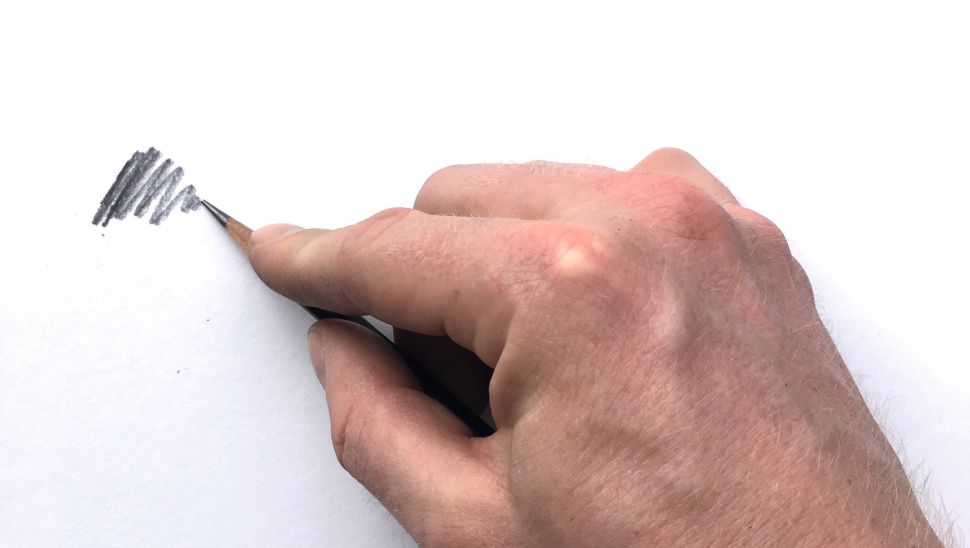
The showtime step is to master how to hold a pencil correctly. Chiu recommends holding the pencil like y'all could a piece of charcoal, and using the side of the lead to draw, rather than the indicate. This helps keep the pencil sharper for longer.
"When roofing large areas, I shade with my pencil perpendicular to the line I'm drawing to become wide, soft lines," he adds. "For details, I agree my pencil parallel to my lines to go sharp, narrow marks. The only fourth dimension I use the point is when I'm working on intricate details."
"Information technology is important to consider where you are making your mark from – fingers, wrist or shoulder," adds artist Jake Spicer.
02. Consider your lines

The kind of marks yous're making volition shape the experience and expect of your pencil drawing. Things like how fast you depict a line and the weight you lot put into a stroke volition change the look of the line. "A heavy line is dark and definite; a lightly fatigued line is pale and exploratory," says Spicer. "When you are starting out, endeavor to avoid uncertain, feathery marks."
03. Get-go with an underdrawing
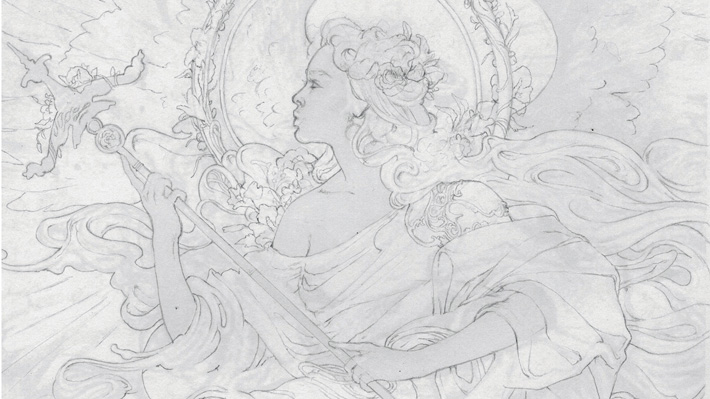
Many artists prefer to start their pencil cartoon by laying out the scene with a crude, light underdrawing – this can be specially useful if the finish game is a precise line cartoon. "Having a more fluid foundation helps y'all see the end result without the intimidating commitment of getting everything perfect," says artist Timothy von Reuden.
For a pencil underdrawing, make sure you lot employ a difficult pb (around 2H) to ensure the lines are light and like shooting fish in a barrel to erase. Alternatively, you could apply a digital underdrawing, printed at 1 per cent Opacity. Either mode, brand sure this acts as a foundation rather than a strict guide. "I strongly believe in letting intuition accept over in the creation process, and so I piece of work with the underdrawing more as a guideline," continues Von Reuden.
04. Piece of work left-to-right
Pencils are prone to smudging, and the softer they are, the more difficult it is to keep things clean. Nevertheless, planning which area of the composition you work on first tin can assistance. Essentially y'all don't desire to be resting your hand on areas you've already drawn, which means that unless you have an unusual pencil grip, you lot want to be working tiptop to bottom. And so right-handers should work left to correct, and lefties move right to left.
05. Attempt a blind profile drawing
One common exercise to start out with is blind contour drawing. "Set upward a subject in front of you and fix your eye on the top of information technology, placing your pencil on your paper. Without looking downwards at the paper, trace your eye effectually your subject, following its edges and contours, and equally you do and so, allow your pencil follow the aforementioned journeying on the newspaper," explains Spicer. "Draw in a single, unbroken line and don't await back at the drawing until yous are finished."
The result will await odd and incorrect, just that's not a problem. The aim of this is to aid you describe confidently and unselfconsciously, and it'due south a great way to overcome a fear of staring at a bare page. "Repeat the exercise regularly every bit a warm upwardly to become your hand working together with your center," suggests Spicer.
You tin can suit the exercise past flicking your eye down to the page at regular intervals, and trying to suit your line style and weight to accurately describe what you see (you're however using one, unbroken line). "Don't aim for precisely authentic proportion, instead aim for an honest process of looking and marking making, without overthinking the drawing," he concludes.
06. Vary line thickness

Varying the thickness of the line y'all utilise help guide your viewer through your cartoon, explains Von Reuden. Thicker lines can help point importance, or tell the viewer that something is in the foreground of the scene. They can also be used to distinguish betwixt two divide, overlapping objects – a thicker line on the exterior of an object an aid differentiate the outside lines of the subject matter from the lines that represent the details within.
In the example above, you can meet how different line weights tin can be combined to brand a form appear more than three-dimensional.
07. Mix up shading techniques
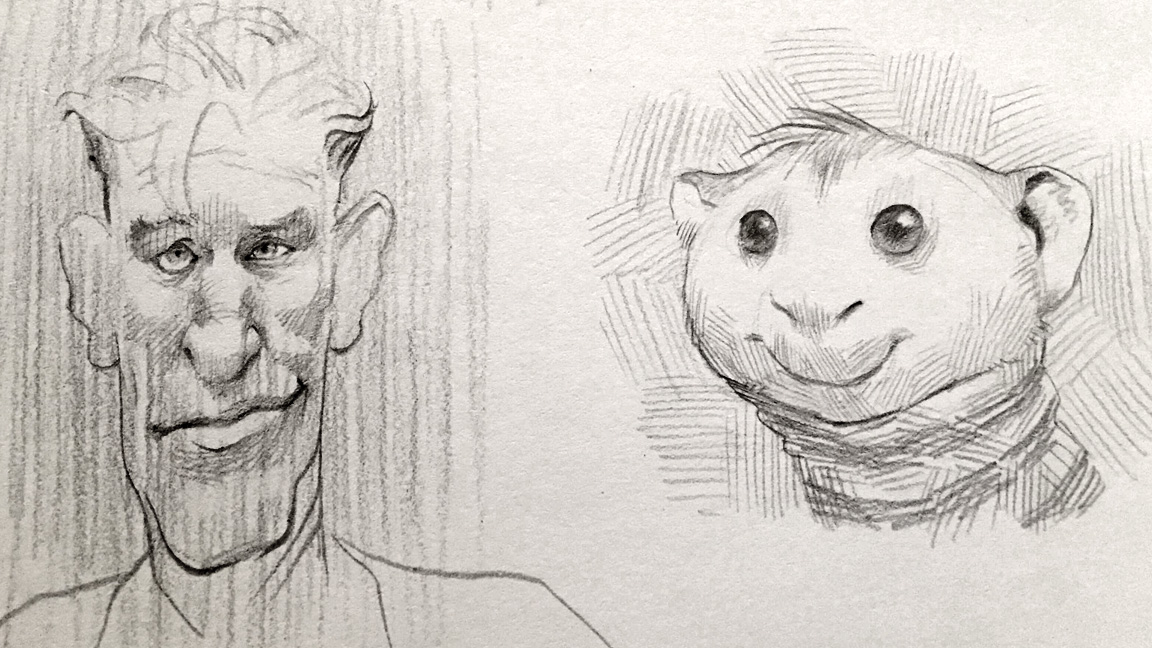
There are lots of different pencil cartoon techniques relating to shading. Chiu uses ii principal approaches. The first is with all the lines going in the same direction. "This makes my shading appear more cohesive, and helps my details pop out from the lines I'm using for shading," he explains.
The second method involves working in patches of shading, to help ascertain shape. "Patches of lines get around the class, which help keep things in perspective," he says. This technique is likewise great for backgrounds and creating texture.
08. With item work, control your lines
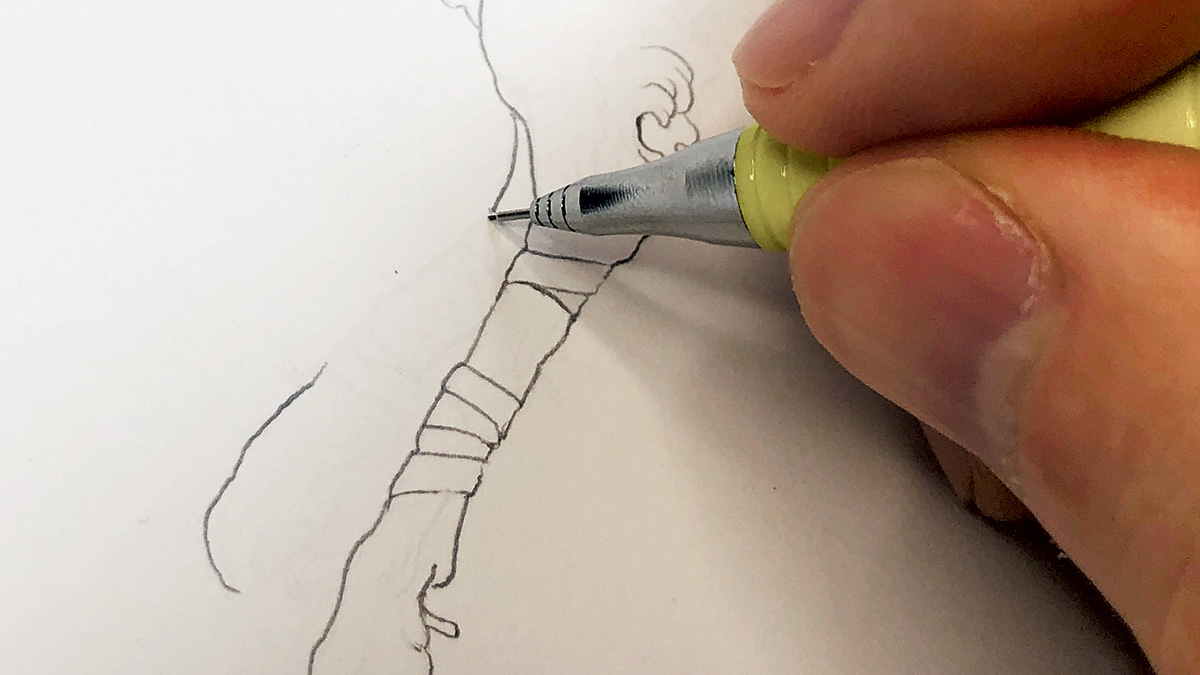
If yous're working on a detailed area, be wary of your pencil line. "When information technology comes to creating cleaner and tighter line work, staying consistent is key," says Von Reuden. "Not simply should yous be enlightened of the look of your line but too the pressure yous're applying to the pencil and on the paper. Be actively enlightened at this phase and don't rush it." He suggests regularly stepping back to check the overall effect of your work, and ensure you're keeping your line steady throughout.
09. Master blending

US-based artist Jennifer Healy has a specific process for blending her coloured pencil piece of work. She starts with an outline, to check the form is right before committing to coloured pencil (it's much harder to erase coloured-in areas than an outline). It likewise helps her plan where the highlights and shadows will autumn.
She then builds up colour using subtle layers. "I like to start out with soft gentle layers to gain a better idea of lighting placement, shadows and the colour palette," she says. After each layer she blends gently using the blending stump.

Once she has reached a stage she's happy with, she moves on to the final step: calculation an outline. For this final layer, Healy uses coloured pencils lone, and does non blend with a stump.
10. Commencement lightly and build from at that place

"When I start drawing, I plan and explore using loose lines, and avoid committing too early with hard, night lines," says Chiu. "As I progress my lines will change, then checking and rechecking my work is vital. I darken my lines and add details at the end. I don't focus on ane area for too long to prevent overdrawing."
11. Make clean upwards later yourself
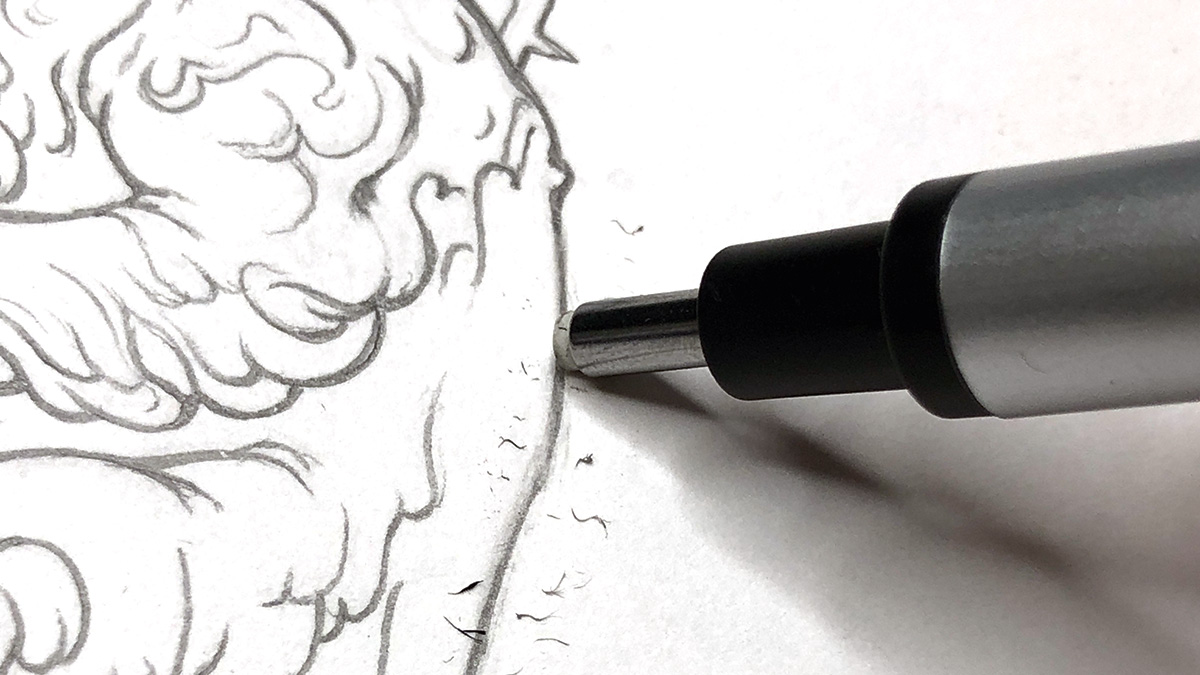
Your eraser can be but equally important as the pencil itself. In that location are a few different types (see the Tools department for more on this), but whichever you choose you want to brand sure it'southward shut to hand whenever you're working. "Whenever a line gets too thick, I either erase the entire line or try to line upwardly the eraser edge to slim down the existing line," says Von Reuden. "I like to clean up during the unabridged process and at the end do a terminal sweep to make sure I didn't miss an expanse earlier calling it done."
12. Check and recheck
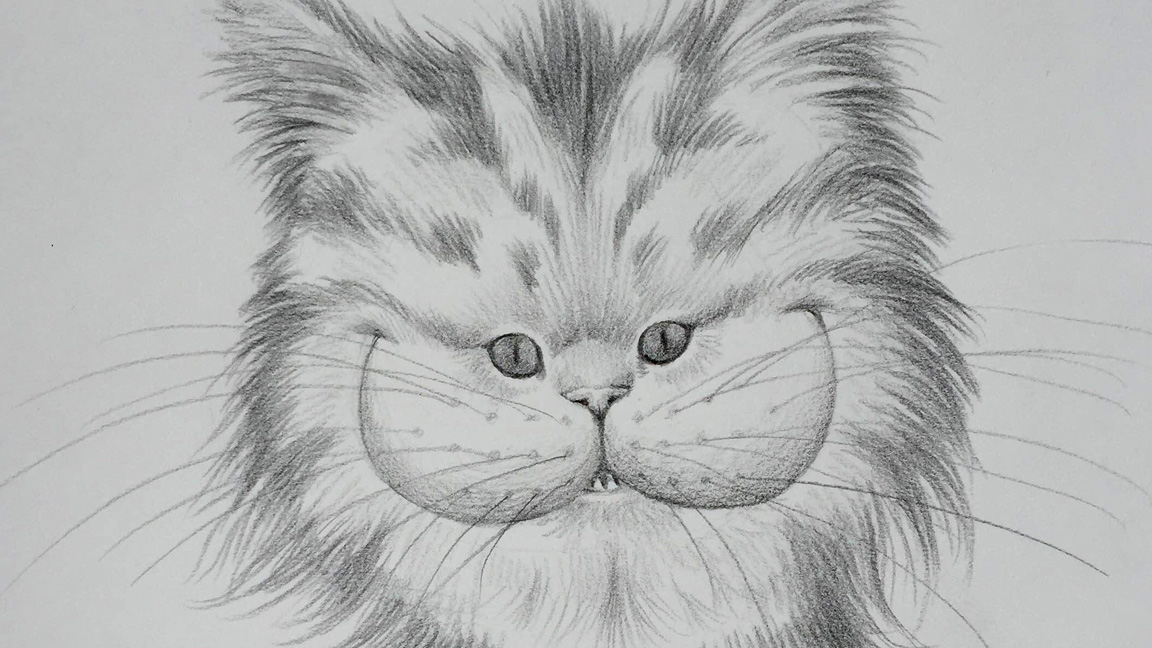
Before you lot movement on to stronger lines and particular work, it's essential to brand sure you have the right course downwards. Chiu's advice is to check and check again. "I have to boom down my cartoon'southward underpinnings before I tin add details. I really avoid guessing at the details; I desire to brand certain things are symmetrical and look correct earlier putting down stronger and harder lines."
He also suggests looking at your piece of work in a mirror or through a camera. Considering different vantage points is a nifty way to highlight if anything is off. "I constantly ask myself, does this feel right? If anything seems off – fifty-fifty if I tin't immediately put my finger on what it is – I trust my gut and troubleshoot my drawing before continuing."
13. Know when to stop

The majority of artists take a tendency to tinker with their work – even after they've signed their proper name. "I can always detect something to modify if I look hard enough, so information technology tin can exist difficult to tell when a piece is truly finished," says Chiu.
Withal, be wary of overworking your slice. "Eventually, I make a conscious conclusion to put my cartoon away and commencement something new," he continues. "That'due south when I consider my drawing done. Well, maybe..."
Use the right tools
14. Selection the right pencil

The pencil y'all choose will have a big bear on on both the techniques you lot tin use and the await of your find artwork. Different pencil types are better for different styles of artwork, and you also demand to consider the hardness of your lead.
Traditional graphite pencils are available in a scale of hardness from 9H (difficult, pale) to 9B (soft, dark), with HB and F sitting the middle of the range. "Typically, the H grades are suited to technical drawing, while B grades are ideal sketching pencils," explains Spicer. He suggests a 2B or 3B pencil is a good place to start with general pencil drawings.
Then you need to pick the blazon of pencil. Traditional graphite pencils tend to circular out quickly, and so need regular sharpening to produce a consistent-sized tip. The softer your pencil, the more sharpening you'll need to do. Traditional pencils are keen for shading, especially larger areas.
The other master option is a mechanical pencil (see our guide to the best mechanical pencils for drawing). These offering clean, crisp edges, and are meliorate at maintaining a consequent line. Yous don't demand to sharpen them, either. If you lot're creating a large artwork, bear in mind that a mechanical pencil tin boring the drawing process. For a more in-depth expect at your options, take a look at our guide to the best pencils.
15. Sharpen correctly
"Some drawings require a fine, sharp point for pinning down a crisp line, others a broad, flat side to the pencil lead for blocking in tone. Sometimes, a blunt betoken tin can serve your purposes," says Spicer. "Any your preference, ensure you lot ever have a sharpener on mitt."
Again, there are a few options here. Choose betwixt a regular handheld sharpener (portable, easy to utilise), a desk-bound-mounted helical sharpener (typically longer-lasting, and will grind the pencil to a longer signal) or a craft knife (get the point yous want, only in that location'southward some danger of slicing your fingers off).
sixteen. Protect your paper
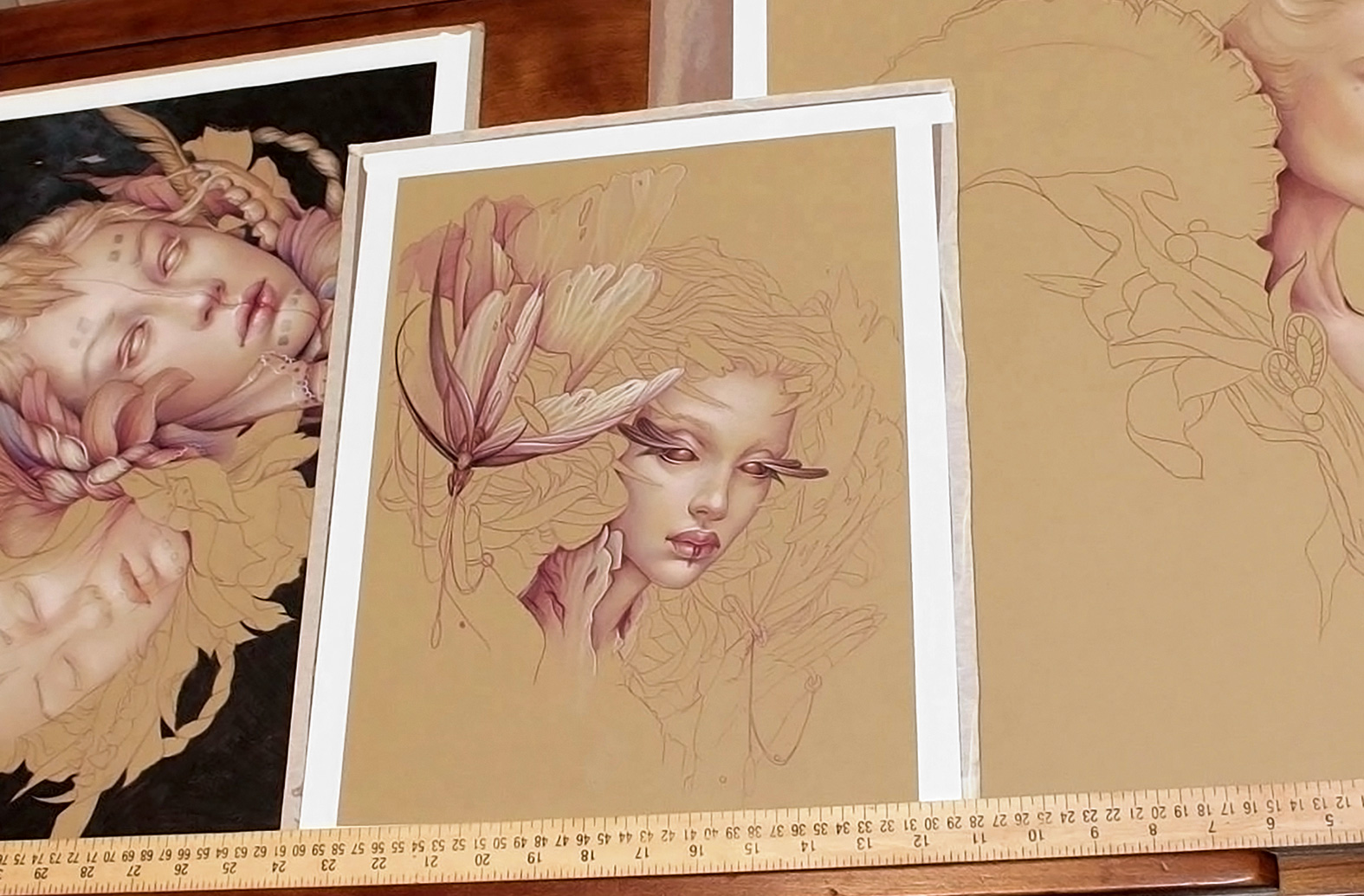
This is a valuable pencil drawing technique for beginners: put a slice of newspaper nether my manus to avoid smudging your drawing while y'all're working. Information technology seems obvious, but it tin be the downfall of a great piece of piece of work!
Healy also prefers to mount her newspaper on a board, attaching information technology using a layer of matte medium. This helps keep things neat, and provides a solid surface to work on.
17. Explore unlike paper textures
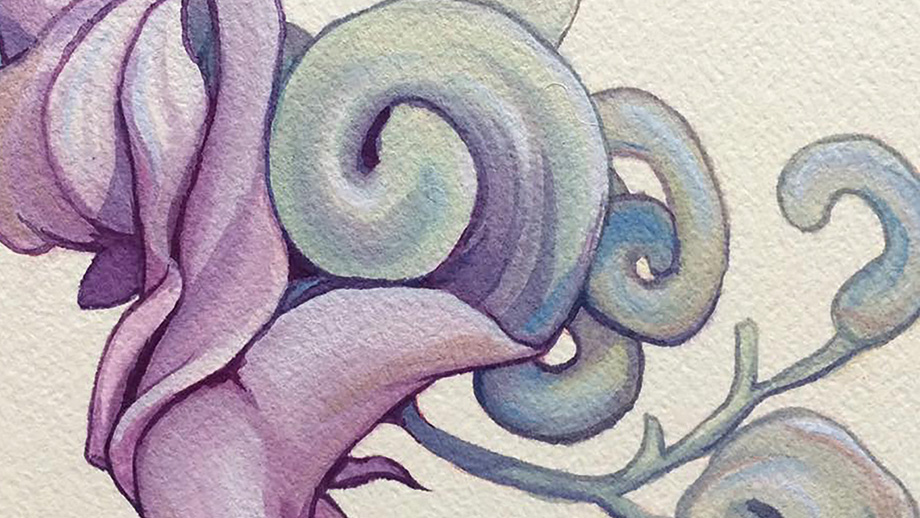
The surface texture you lot're working on will brand a big difference to the furnishings you can create. This is referred to every bit the grain or 'tooth' of the paper. A rough tooth is more visible, and the ridges volition grip the color from your pencils.
With a polish molar, the ridges are very fine, and there'southward less grip. Healy finds this kind of newspaper provides an easier surface for blending coloured pencils, although she warns that information technology's likewise easy to run the colour off the surface.
18. Invest in a putty eraser
There are a few different types of eraser, and each is suited to different things. Many pencils have a modest eraser caput, which is ideal for thinning out lines that go too thick. However, don't rely on this alone: you'll also want to invest in a kneaded eraser. This has a putty-like consistency (it's sometimes called a putty eraser), and you lot knead it before and after use.
"A kneaded eraser is best for lightly picking upwards the coloured pencil binding off the paper. This works wonders when correcting mistakes, or if you're deliberately lifting colour from an area such as the eyes," says Healy. A gum eraser has a more solid consistency, and is better if you're trying to fully erase a coloured-in area.
19. Try a stump for soft blending

How y'all blend your work tin can have a large impact on the concluding result. For a soft blended upshot, effort a blending stump.
"Afterwards each light layer, I very gently alloy the coloured pencils with the stump," says Healy. "Don't push too hard or the color will stick, making it more difficult to softly blend. I echo this procedure as often every bit I need. After many layers it produces a very soft and delicate look."
This technique requires a little trial and error, though. Healy warns that if y'all blend too softly, the stump can pick up colour that y'all've already layered on the paper.
Advanced tips
20. Unify your colours
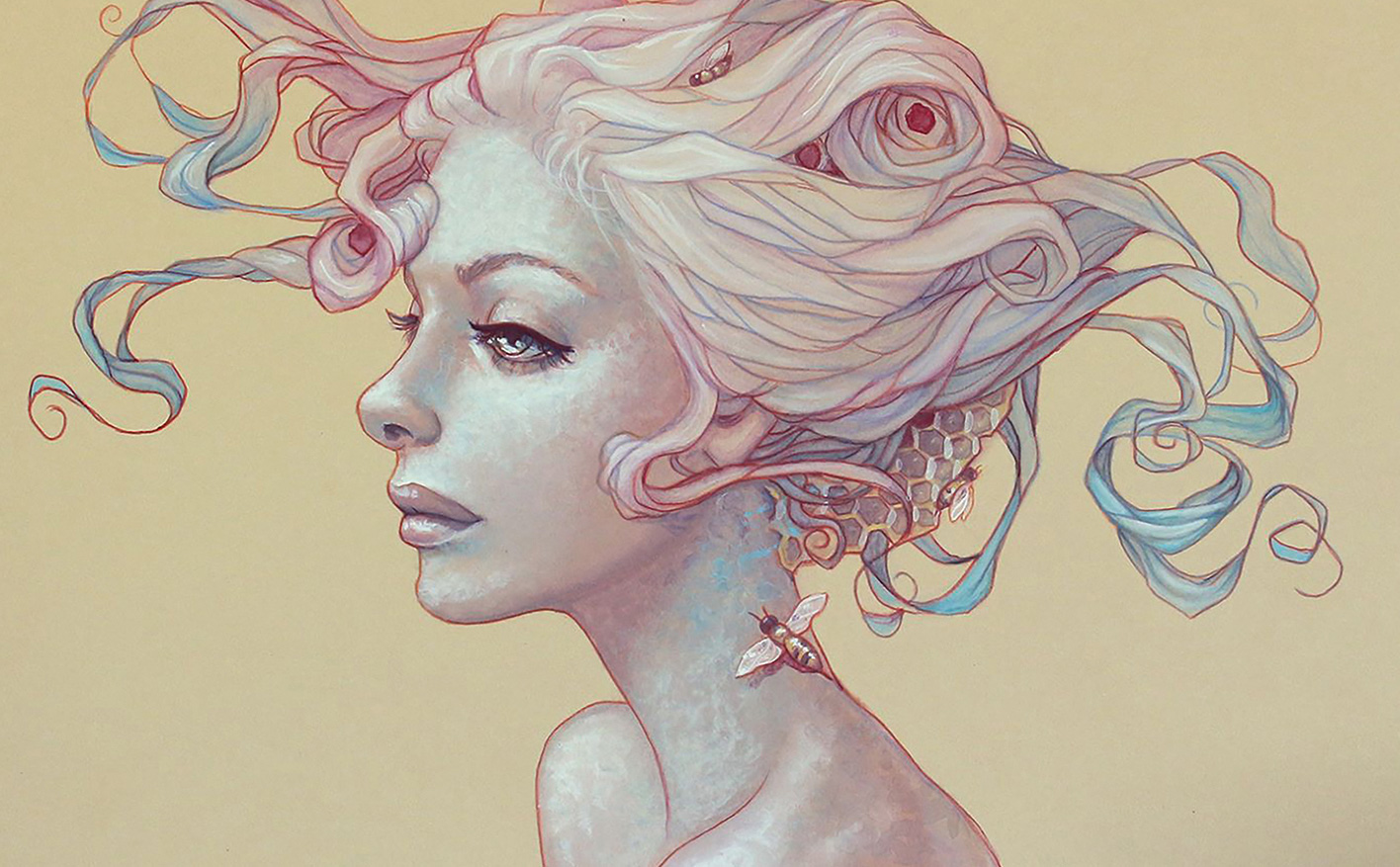
Having a uniform arroyo to colour will help bring cohesiveness to your work. "It'southward a good thought to make sure that your artwork has unifying colours," says Healy. "This consists of a particular colour palette, mood and a mode of spreading these across the unabridged art slice."
She also suggests creating a harmonious base by using tinted newspaper or adding a background wash of colour (in paint). "This will evidence through whatever y'all lay down on top of it, thus giving it an appearance of cohesion. When I use coloured pencils, I'm fond of using tinted paper produced by Kraft."
21. Try different approaches to outlines
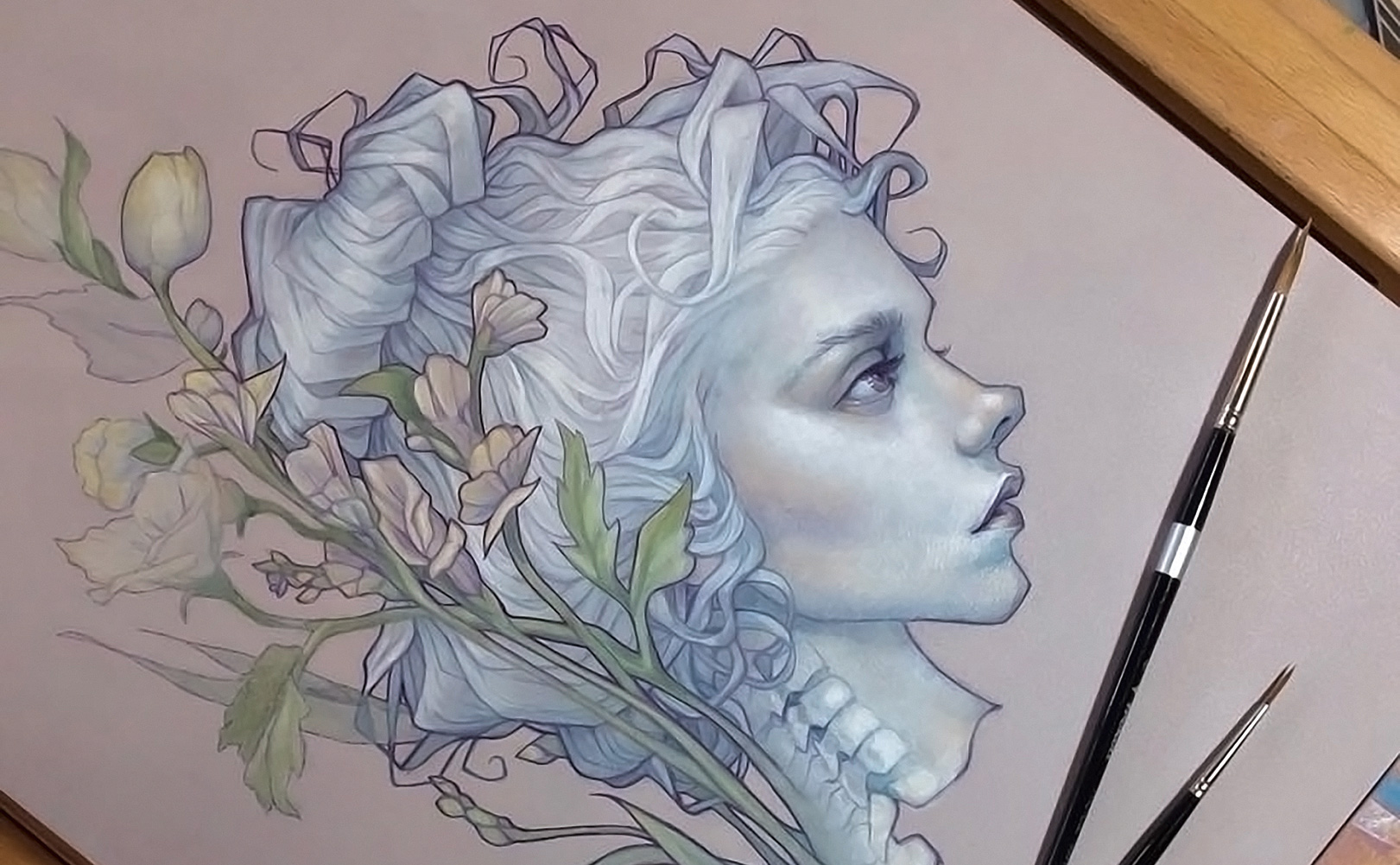
The next cartoon technique concerns line weight. As well as demarcating different objects, lines tin help emphasise shadows. "Thicker lines can fade and disappear into the shadows, which can help convey the 3D grade," explains Chiu.
Beyond that, dissimilar artists take different approaches to lines – you need to find the style that's right for you lot. "I prefer to use a distinct outline in my artwork, whether it'south using thin outlines or assuming outlines," says Healy. "It tin can assist pinpoint the viewer'due south middle to a certain surface area. Information technology as well gives a stylised look, if that's what you are hoping to achieve."
Chiu, however, prefers a different approach. "I endeavour to avoid outlining my drawings because this tends to make things look flat and deadens the 3D event. Breaks and spaces in my lines show form in the lights and shadows."
22. Draw on your own experiences
"Dip into your experiences to add a special layer of authenticity to your piece," suggests Healy. "This means using something like a memory, feeling or odor when creating your work. For case, the special feeling y'all experienced when sitting down with a friend at a java store, or a retention of a babyhood experience. You tin be abstruse or use hyperrealism. Whatever you cull makes the piece unique to you. I've establish that people resonate with these pieces the about."
23. Use contrasting concepts
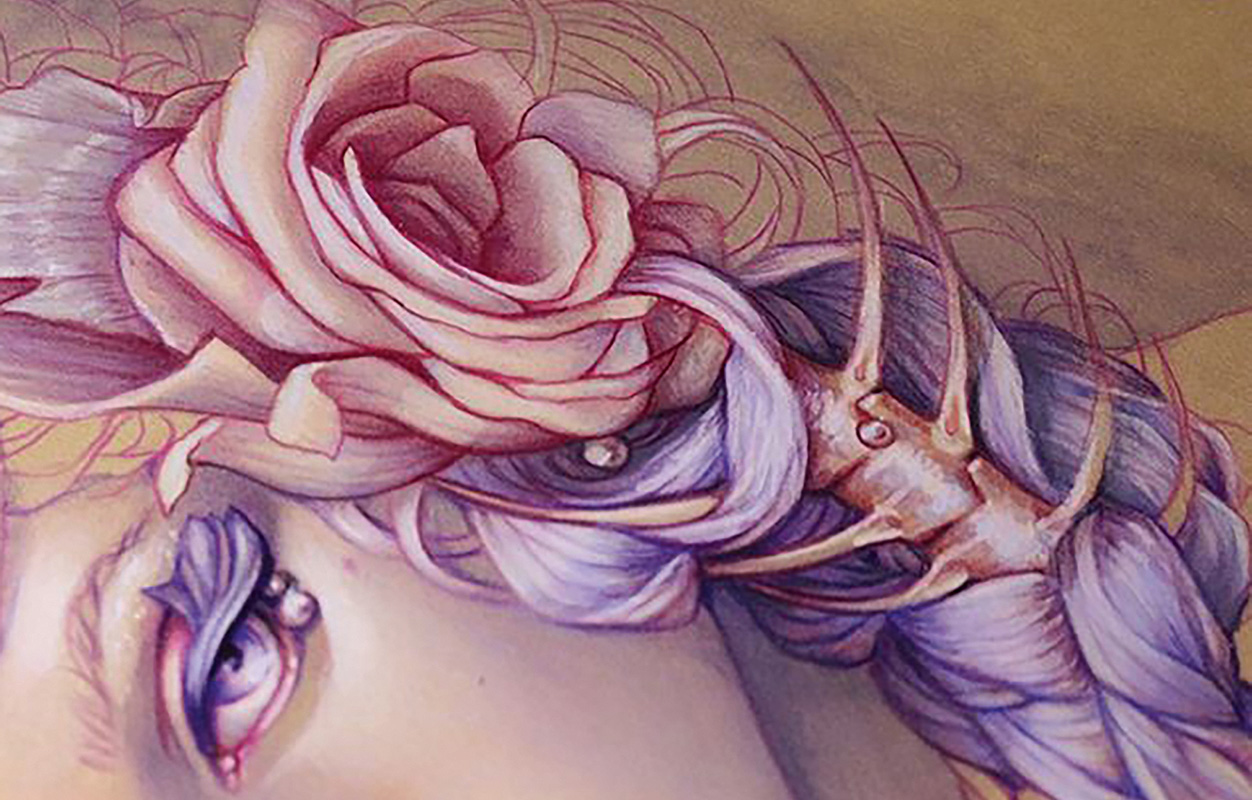
One drawing technique Healy uses in her work is to employ contrasting concepts within a piece of work, for instance, juxtaposing beauty and ugliness. "I'll use the beauty of colours, flowers, the softness of pare or pilus, and the female form. I'll also tend to apply something that's the reverse to all of that, such equally bones, insects, sharp teeth, or annihilation that may provide discomfort to the viewer," she elaborates. "Somehow this provides an interesting concept to a slice. Specially when the 'ugly' parts are harder to spot at first. To me this is a very stark representation of what life is like."
24. Try combining pencils with watercolour

While pencils on their own can be used to create a wealth of different effects, it can exist interesting to combine them with other media. For example, in her work, Healy likes to combine watercolour and coloured pencils. It's important to start with watercolour and then layer coloured pencils on top, she explains, considering pencils can create a waxy surface that repels liquid, and prevents the watercolour from soaking into the newspaper.
"This is a fun technique to examination out," she says. "Both mediums have unique qualities and textures. Combining the ii elements creates a medium all of its own."
Too read: The best watercolour pencils you can purchase right at present
25. Break out of your comfort zone
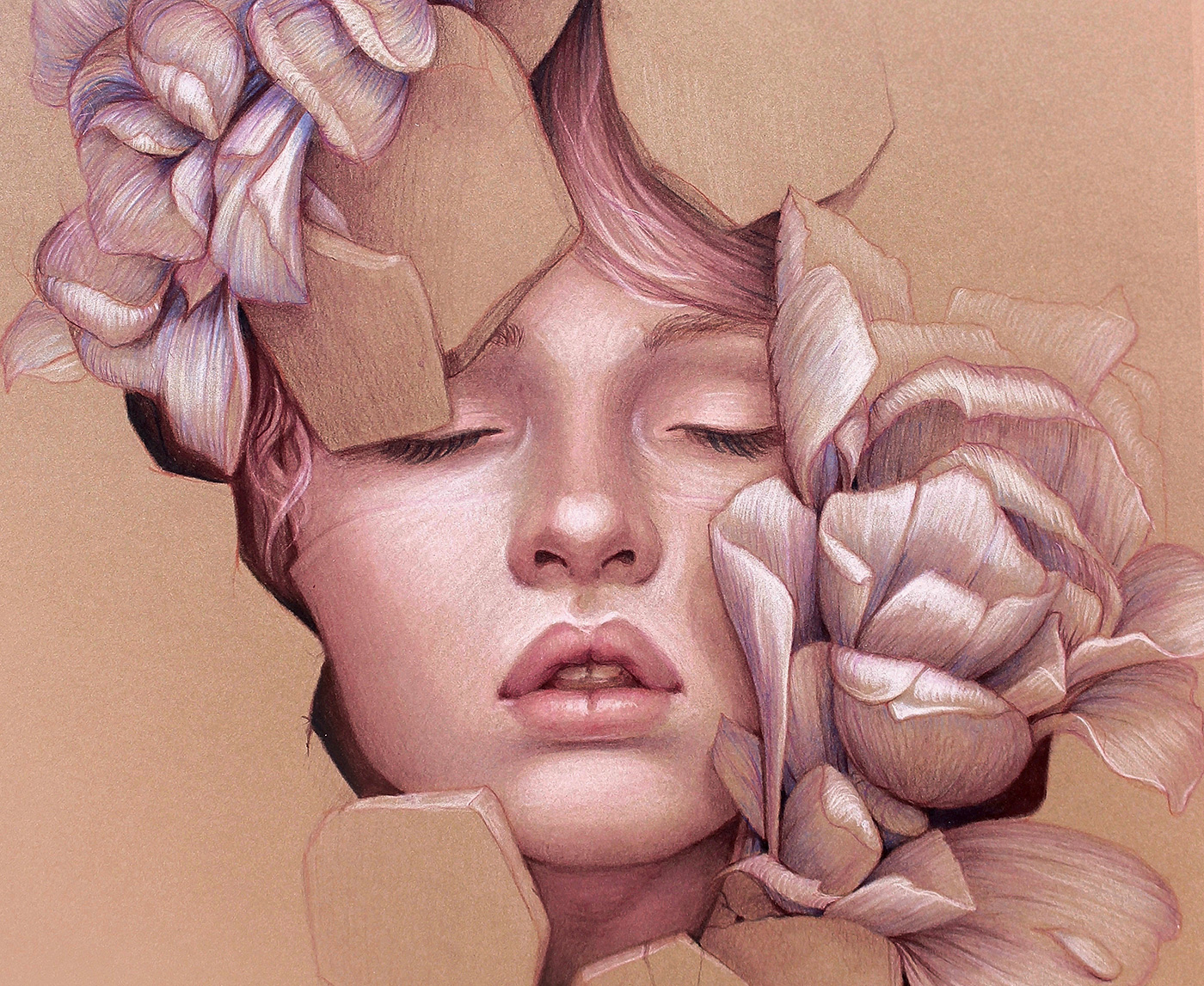
While these pencil drawing techniques should help you understand the essentials of the medium, sometimes yous need to throw the rules out of the window and detect what works for you. "At that place's cypher wrong with stepping outside of the box if it means achieving the effect you lot desire," says Healy. "Trial and error will occur when you step outside of that box. But don't be intimidated! The procedure is entirely fun."
26. Create fabric
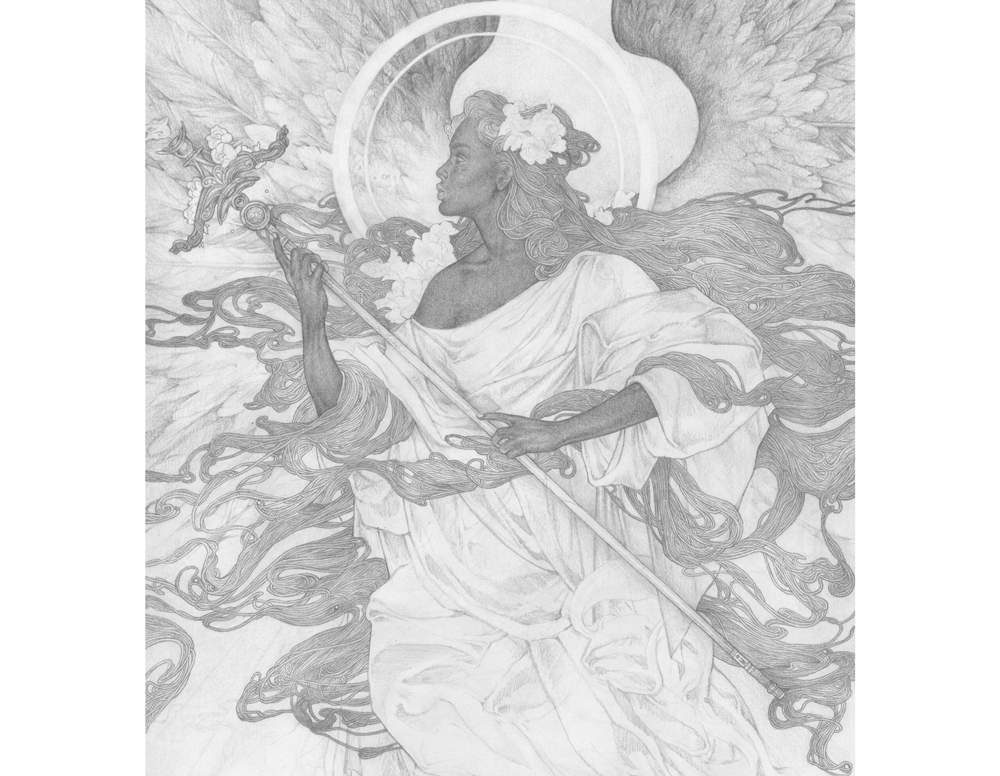
Fabric can range from sleek and shiny to matte and dull. How y'all shade it will help sell the idea of the fabric you're trying to depict. For this sketch, von Reuden is trying to capture the golden folds of fabric establish in the original image. He began by outlining the shapes and blocking out areas of shadow.
27. Categorise your textile
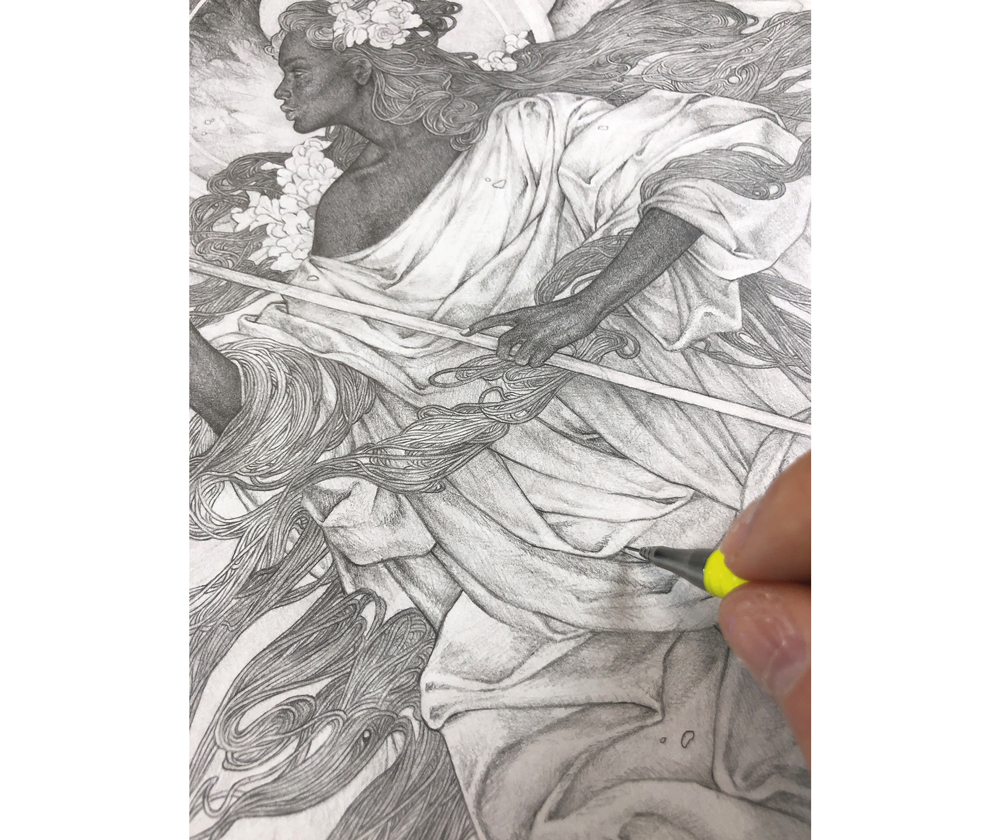
Von Reuden explains how yous can add value and shading to create further layers of depth and weight. He says, "when cartoon and recreating fabric, the types of wrinkles created can all exist placed nether 3 separate categories: hanging/relaxed, stretched/tension, and scrunched/compressed."
"Hanging fabric tends to be loose and take a flowing advent. Stretched fabric creates long lines, usually with a point of support. Compressed fabrics agglomeration into each other, creating scrunched-looking areas."
Some of this communication comes from ImagineFX , the earth's best-selling magazine for digital artists. Subscribe here .
Related articles:
- How to master color theory
- Get started with ink cartoon
- How to draw a rose
Related articles
How To Get Better At Drawing Backgrounds,
Source: https://www.creativebloq.com/art/drawing-techniques-7-fundamentals-pencil-drawing-71621181
Posted by: cochranhaustrand.blogspot.com


0 Response to "How To Get Better At Drawing Backgrounds"
Post a Comment